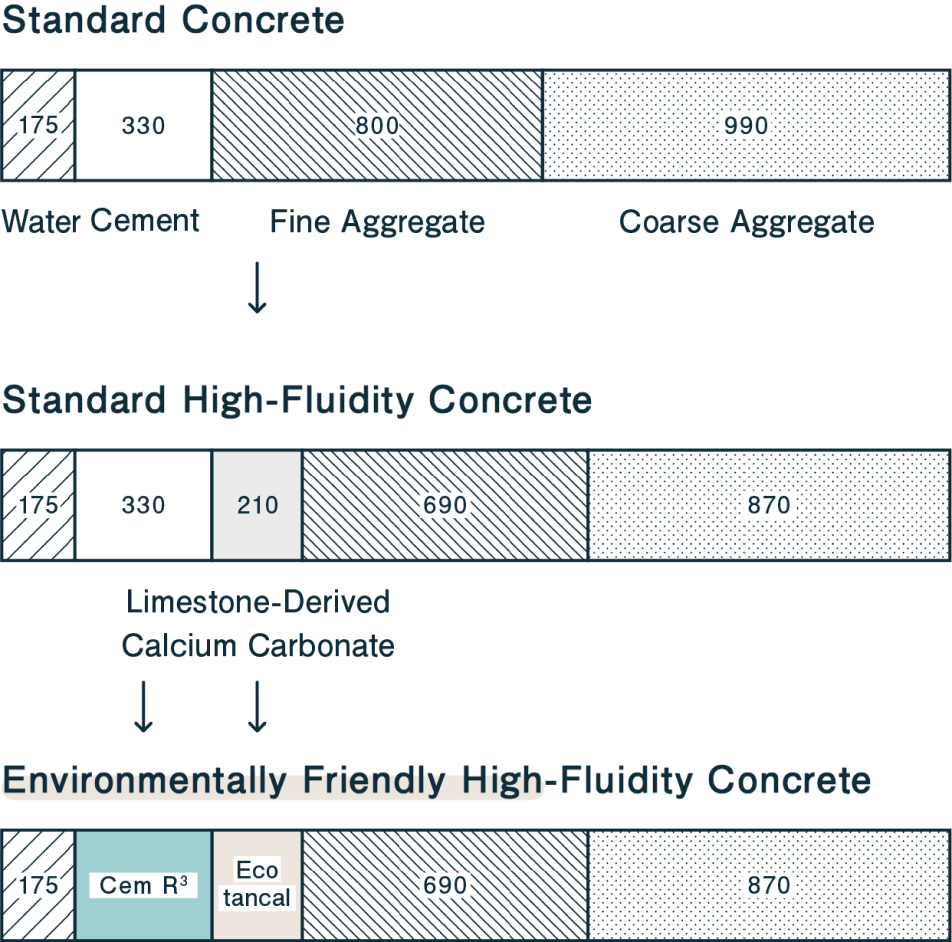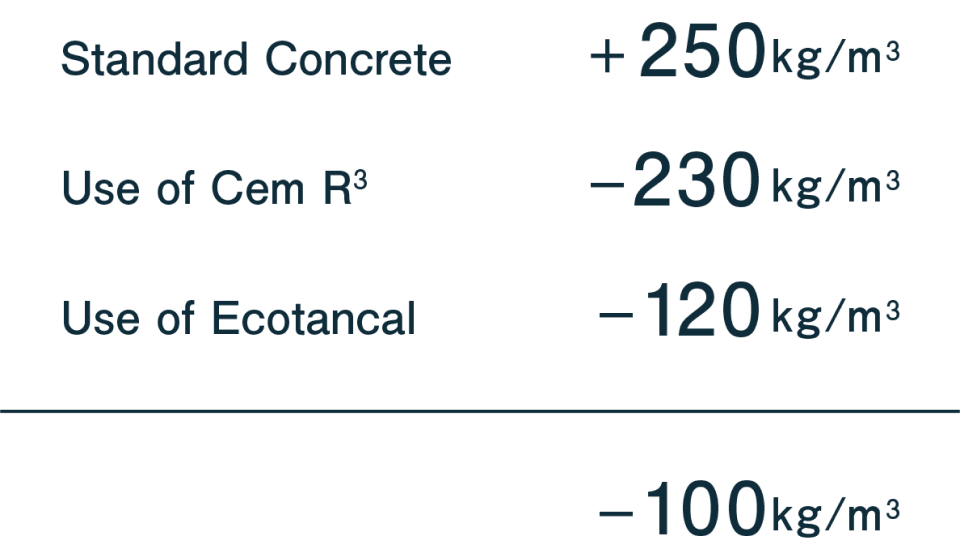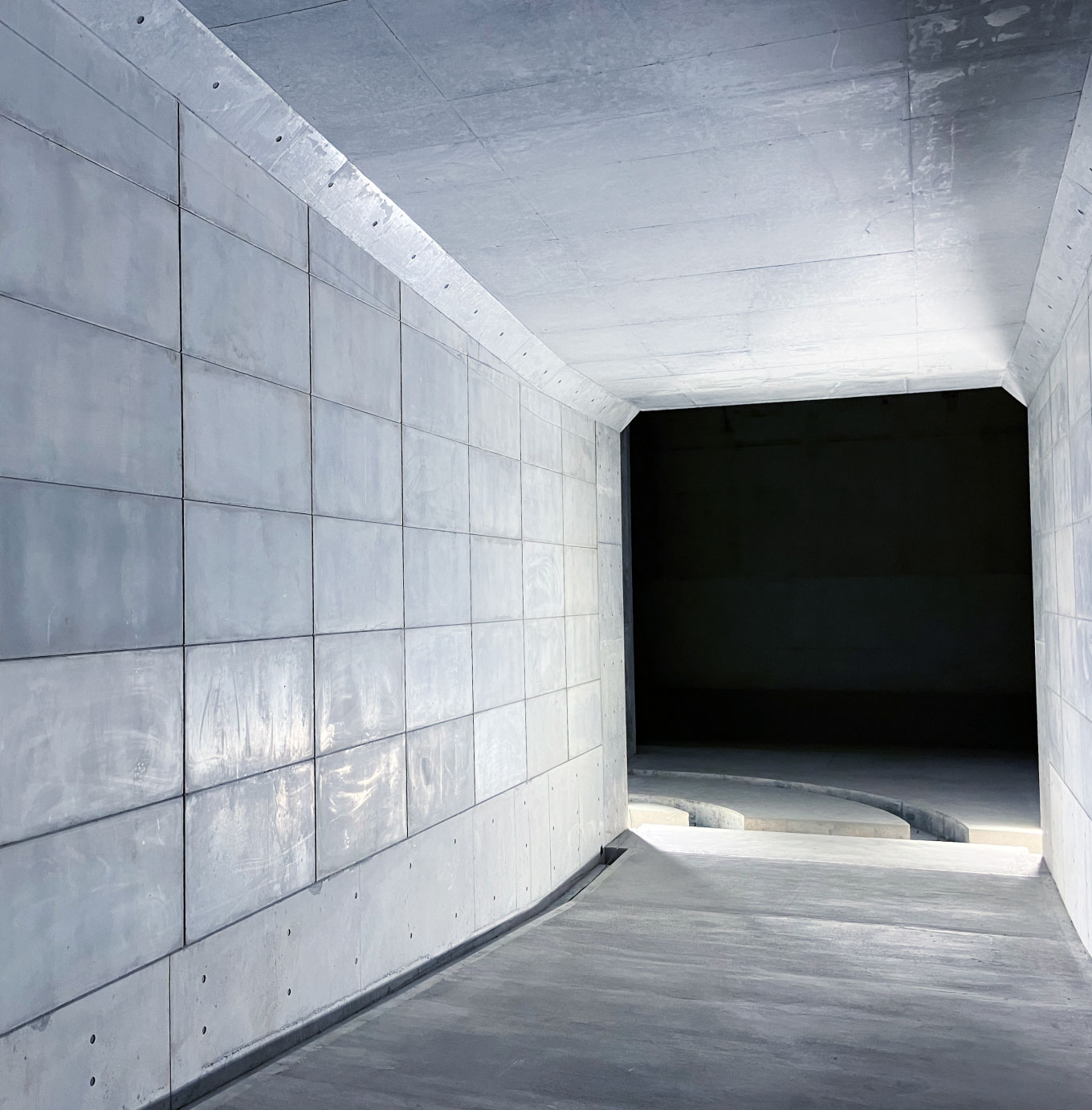
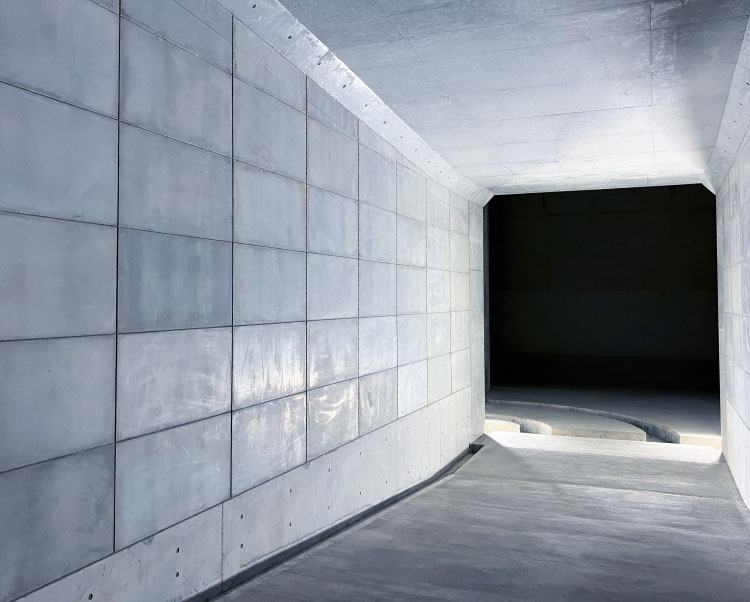
(POINT 01)
The manufacturing process for concrete produces large volumes of CO2. However, by mixing calcium carbonate—a compound created when CO2 reacts to calcium contained in waste products—into the concrete as an aggregate or admixture, researchers discovered a way to reduce the volume of emissions.
Currently, the only commercially available calcium carbonate product is Ecotancal, developed by Nippon Concrete Industries Co.—one of Kajima’s research partners. Ecotancal is manufactured by mixing wastewater produced inside a precast concrete plant—and which contains calcium—with CO2 emitted by boilers. The result is a calcium carbonate powder with a purity of 97% to over 99%.
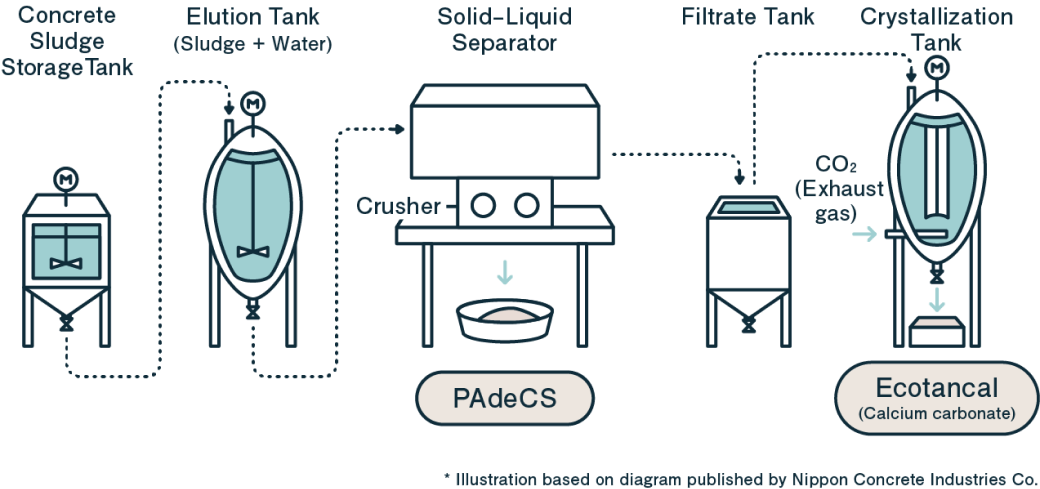
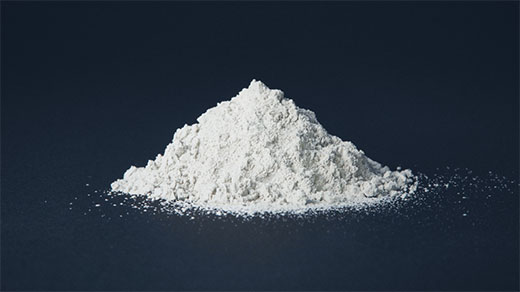
(POINT 02)
Generally, when concrete is poured into a mold, vibrating tools are used to eliminate air bubbles in the mixture and ensure the concrete spreads over every part of the mold. This process, known as compaction, ensures that the concrete maintains its strength and durability.
However, compaction is a very laborious process and can be difficult when there are steel bars criss-crossing over the mold. This was what led to the development of high-fluidity concrete, which does not require compaction. High-fluidity concrete is now included in Japanese government recommendations as a solution for mitigating the impact of smaller workforces and for improving productivity. In the future, high-fluidity concrete is expected to facilitate the automation of pouring concrete.
High-fluidity concrete needs to both flow readily so it can fill a mold without compaction and be highly cohesive so the materials do not separate. In this field, Kajima has been a pioneer, having developed NV Concrete over 30 years ago. This high-fluidity concrete uses natural calcium carbonate from limestone to prevent the materials in the concrete from separating. NV Concrete has greatly improved productivity on construction sites.
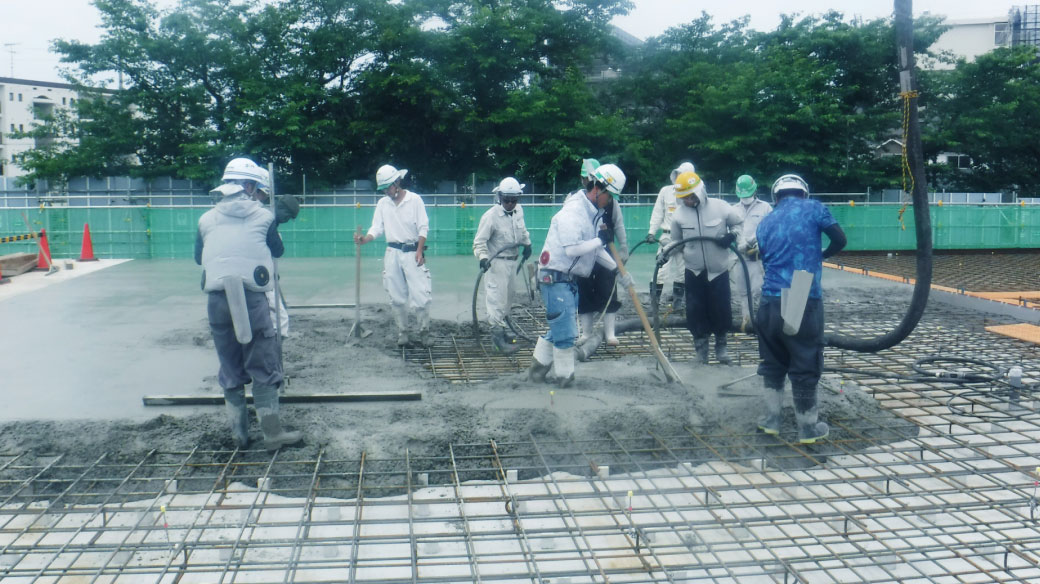
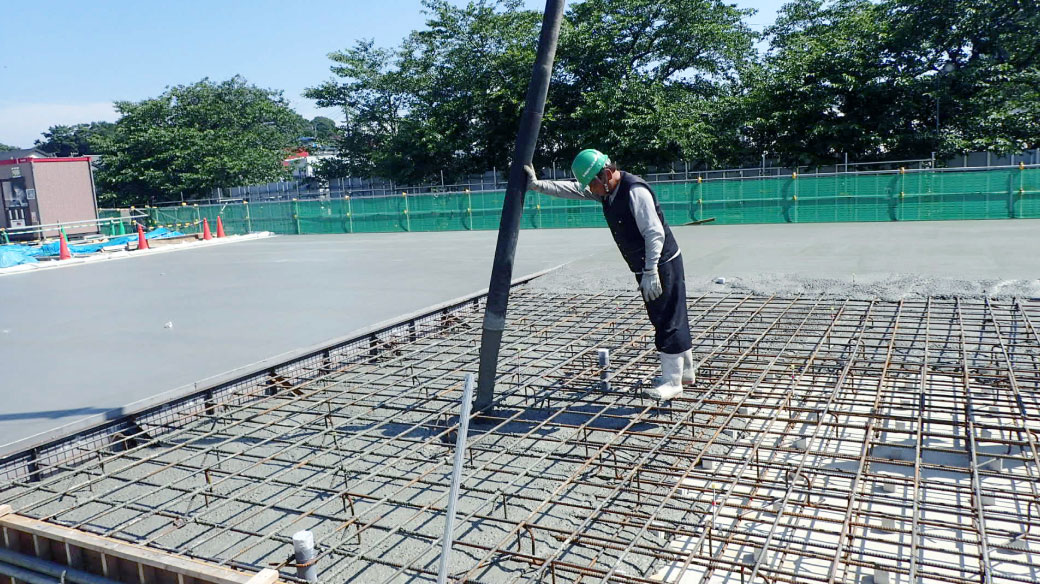
(POINT 03)
Now, Kajima has combined its NV Concrete technology with Ecotancal to create a carbon-storing high-fluidity concrete. The limestone-derived natural calcium carbonate in the concrete mixture has been replaced with Ecotancal, which is made from captured carbon. Meanwhile, the cement—one of the main ingredients of concrete—has been replaced with Cem R3, a type of recycled cement. The resulting concrete is capable of producing a carbon negative effect of -100kg/m³.
